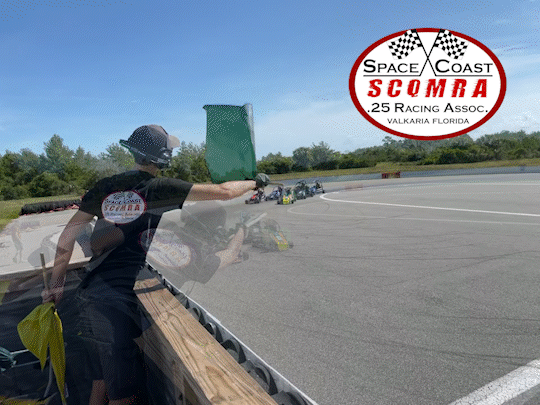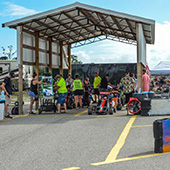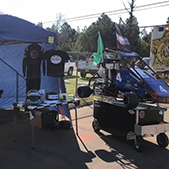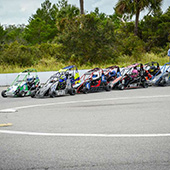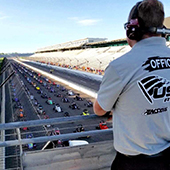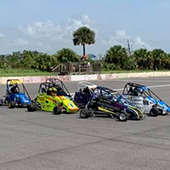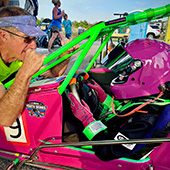Quarter Midget Racing
How To Start?
The best place to start is by visiting your local .25 track during a scheduled race event. Depending on the size of the club you should be able watch a range of drivers from those just starting to very experienced ones.
Most clubs will have an arrive and drive event at least once a year that provides you an opportunity to "try before you buy". Cars used at these events are setup specifically for new drivers with restricted engines. All safety gear is also provided for the session. Experienced drivers are on hand to talk to your child about what to expect on the track. A brief orientation will consist of how to enter the track, gas/brake pedal, how to exit the track, etc. After getting safety checked your child will drive the track for a predetermined number of laps. In addition, the event is a great opportunity to ask specific questions of experienced handlers. Handlers are usually a parent of the driver and act as the crew chief, mechanic, and shoulder to cry on when the race didn't go well.
If your child won't leave you alone after the arrive/drive you now have a driver on your hands. It's time to start assembling the pieces of the puzzle that will allow your driver to start training. Those same handlers that you talked to at the arrive/drive are a good place to start when looking for a car, engine, safety gear, and advice.
Once you have everything you need to get on the track connect with the club training director. Your driver will go through a series of training sessions that teach the basics for safe operation of the vehicle, understanding race procedures, and track rules. Once your driver has a solid foundation the training director will clear him/her to race. These races are in restricted learning classes (rookie for USAC and novice for QMA). Entry into the competitive divisions require the joint decision of the driver's parents and the training director. Training is not only for the driver. There is a lot of learning for the handler(s) (mom/dad) as well. You will learn race day procedures, how to setup the car, and how to get feedback from your driver just to name a few.
